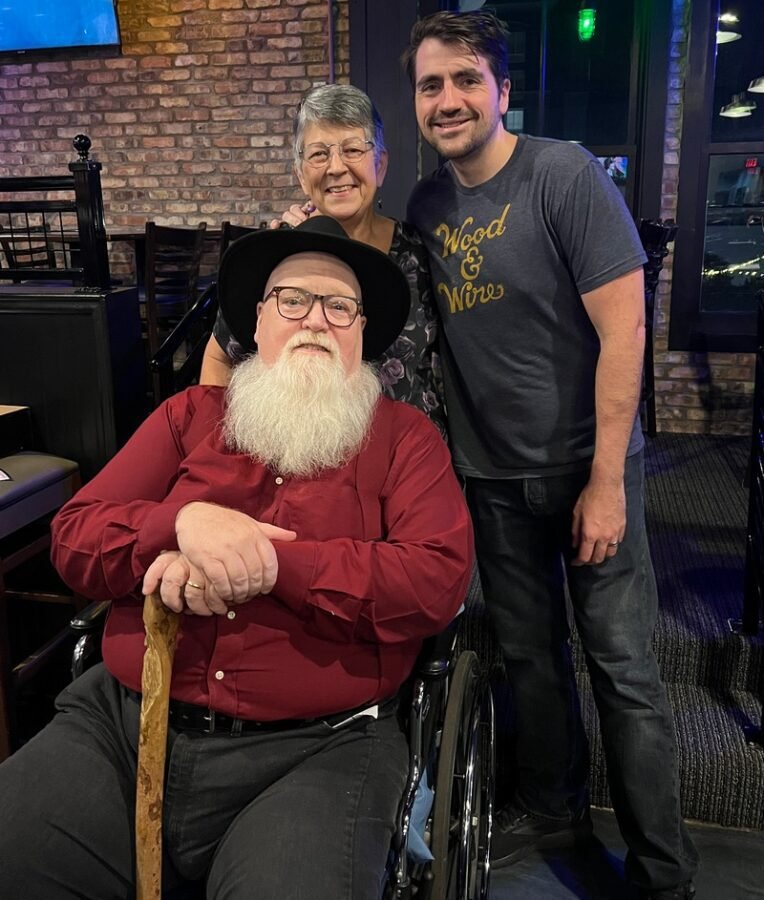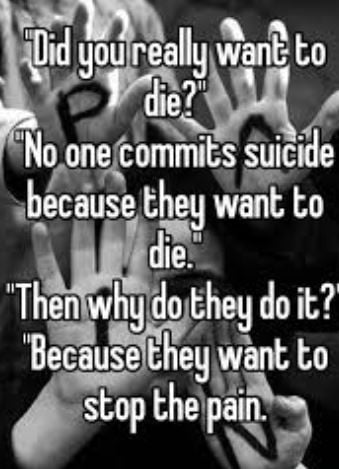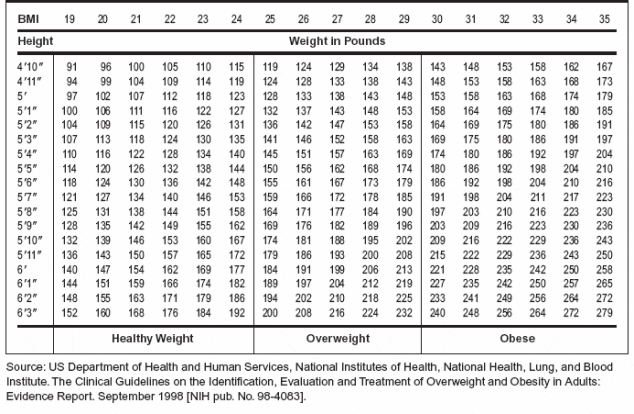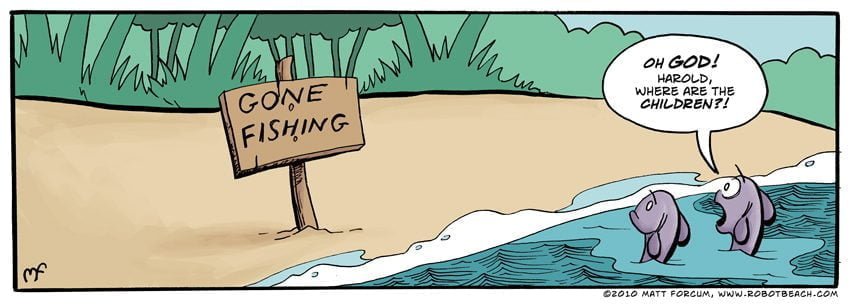
My partner, Polly, and I traveled to Toledo, Ohio, last night to listen to Trae Crowder at the Funny Bone Comedy Club and Restaurant in Levis Commons — a sprawling outdoor shopping center. Big fans of Crowder, we’ve been looking forward to hearing him for months. We listen to his weekly podcast, along with the short videos Crowder puts out several times a week. Crowder, an agnostic, calls himself the “Liberal Redneck.” While Crowder, age 37, currently lives in Los Angeles, he came of age in rural Tennessee. Crowder attributes his liberal/progressive political and social beliefs to his family’s abject poverty during his childhood years.

Having grown up in similar circumstances in the 1960s-1980s, I find Crowder’s humor appeals to me in ways other comedians don’t. When Crowder talks about “white trash” or “trailer trash,” I understand. When uttered by people who have never experienced real poverty, I bristle and often give them a buffet-plate-loaded-up-on-seafood-night response. However, when someone from the poverty fraternity satirizes these experiences, I laugh — been there done that — but the trauma of those years still lurks in the depths of my being. I no longer live in abject poverty. I am more “fashionably dirt poor” these days. Roof over our heads, food on the table, bills paid (albeit a few days late here and there), and taxes up to date. Life is good, even if the Bengals are 0-2.
Crowder delivered as advertised. We got the opportunity to meet him afterward, shake his hand, and have a picture taken. We live in an area where seven out of ten voters voted for Trump in 2016 and 2020. God, Trump, Guns, and Evangelical Christianity rule the roost. For godless liberals such as Polly and I, we are foreigners in the land of my birth and the home of our six children and grandchildren. Hearing Crowder was a brief respite for us from incessant right-wing extremism.
Unfortunately, the “experience” itself was, to put it mildly, less than optimal, and, at times, downright frustrating and painful.
We arrived at Funny Bone at 6:00 p.m. Unable to find a parking space, we were forced to park three city blocks away from the venue. Neither the sidewalks nor the parking lot were ADA-compliant. We entered the doors for the club around 6:15 p.m. The doors were challenging to enter. Technically, ADA-compliant, it took Polly several attempts to get my wheelchair through the glass doors (there was no automatic door opener). Once in the lobby, we found no staff to assist us. The club itself is on the second floor. On the desk sat a sign that said there was an elevator in “back.” Back where, exactly? No directions, no arrows pointing to the elevator. Being first-time visitors, we were left with figuring out what “back” meant. Polly walked the stairs to the second level, hoping to find anyone to help us. After being unable to find someone to help us, Polly came back to the lobby and told me that she was going to walk around the back of the building to see if she could find the elevator.
With the elevator found, we thought we were home free. Little did we know, the worst was to come.
Out of the inadequate doors we went, around to the elevator, only to find more doors we had to contend with. Barely wide enough for a standard wheelchair, none of the doors had automatic door openers. Fortunately, we had the elevator to ourselves. Easy in, easy out, straight. . . to . . . the . . . venue . . . now, right? Nope, there was another door we had to enter to reach the club. Thanks to boxes stacked near the door, Polly could not push my wheelchair through the door. She had to move the boxes so we had enough room to barely navigate through the door. This door gave way to a hallway that led to the hostess station. The hallway was narrow, and ADA compliant only if there were not boxes or people taking up space. In other words, it was difficult to navigate.
Finally, we made it to the hostess station. I had called Funny Bone the night before to remind them that I was in a wheelchair and would need accommodation. “No problem,” I was told. A few feet in front of the hostess station was a transition between flooring types. Paying no need to ADA compliance, Funny Bone used a raised transition instead of a flat one. Of course, hitting this speed bump nearly tipped over my wheelchair (with me in it). Thoroughly embarrassed, Polly eventually righted my chariot, and onto the main floor we went. The Funny Bone is laid out like a supper club. They could have parked my wheelchair in any number of out-of-the-way places, but the staff decided to sit me at a table that was pushed up next to another table, near where there would be a lot of foot traffic. I spent the rest of the night being bumped into by patrons and employees alike. Telling the crippled guy “sorry” might make you feel good, but it does nothing for the person physically harmed. I suspect if Funny Bone received a spot fire inspection or ADA compliance inspection, they would have failed miserably.
Crowder was as advertised. Afterward, we waited for most of the venue to clear out before leaving. We do this to avoid having to deal with rude, thoughtless people. That and the fact that it is impossible to push a wheelchair anywhere in a crowd. So we waited to make our escape. After retracing our steps, we finally made it to the parking lot at the back of the Funny Bone. We started out on the sidewalk, only to find out it was a dead-end, running into a metal gate. This forced us to take the parking lot, complete with speed bumps to our automobile. Adapt and persevere, right?
Polly wheeled me about ten feet into the parking lot, when all of a sudden my chair stopped, Polly screamed “Oh no!” and I went flying head-first onto the pavement. As I lay prostrate on my right side in the parking lot, Polly steadied herself and came to my aid, Others were nearby, but ignored what was playing out in front of their eyes, Finally, a young man rushed up and asked if I was okay; if I needed any help. Filled with embarrassment and pride, I thanked him and said I would be fine. He waited while I climbed on my knees to the wheelchair, locked the wheels, and pulled myself up. Polly apologized repeatedly as we made it back to the car. I told her, “It’s not your fault.” While on my knees I found the culprit, a chunk of asphalt was missing, and one of the front wheels on my chair sunk into the hole, sending me flying into the crisp fall night.
For those of us who use wheelchairs, walkers, and canes, doing simple things can prove to be a challenge — sometimes, dangerously so. I am not a disabled person who expects the same treatment as able-bodied people. I do, however, expect reasonable accommodations. Levis Commons and Funny Bone failed on this account.
How do I feel today? Time for a shovel and a six-foot rectangular hole. Either that or lots of pain meds and muscle relaxers. Polly couldn’t find the shovel, so we are going the medication route. 🙂
Bruce Gerencser, 66, lives in rural Northwest Ohio with his wife of 45 years. He and his wife have six grown children and thirteen grandchildren. Bruce pastored Evangelical churches for twenty-five years in Ohio, Texas, and Michigan. Bruce left the ministry in 2005, and in 2008 he left Christianity. Bruce is now a humanist and an atheist.
Connect with me on social media:
Your comments are welcome and appreciated. All first-time comments are moderated. Please read the commenting rules before commenting.
You can email Bruce via the Contact Form.










